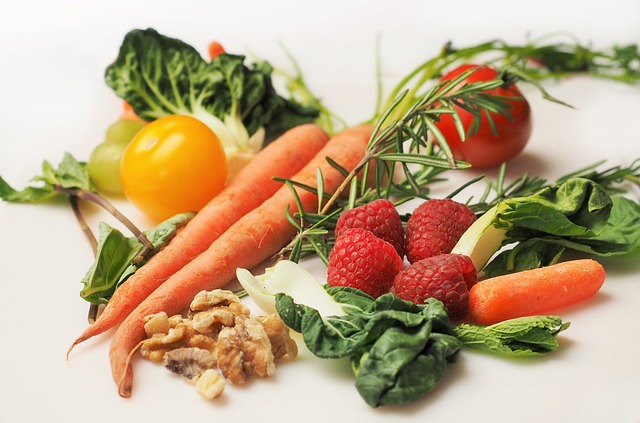Managing diabetes effectively involves consuming foods that help regulate blood sugar levels and support overall health. Below is a list of foods that are particularly beneficial for individuals with diabetes:
1. Non-Starchy Vegetables
These are low in carbohydrates and calories but high in fiber, vitamins, and minerals. Examples include:
- Spinach
- Broccoli
- Cauliflower
- Zucchini
- Bell peppers
- Asparagus
- Green beans
2. Whole Grains
Whole grains are high in fiber, which slows the absorption of glucose into the bloodstream. Examples include:
- Quinoa
- Brown rice
- Oats
- Barley
- Whole-grain bread and pasta
3. Lean Proteins
Protein helps maintain muscle and slows digestion, which can stabilize blood sugar levels. Examples include:
- Chicken (skinless)
- Turkey
- Fish (salmon, mackerel, sardines)
- Eggs
- Plant-based proteins like tofu, tempeh, and legumes (lentils, chickpeas, black beans)
4. Healthy Fats
Healthy fats can help improve insulin sensitivity and reduce inflammation. Examples include:
- Avocados
- Nuts (almonds, walnuts, pistachios)
- Seeds (chia seeds, flaxseeds, sunflower seeds)
- Olive oil
- Fatty fish (rich in omega-3 fatty acids)
5. Fruits
Fruits with a low glycemic index (GI) are preferred as they cause a slower rise in blood sugar levels. Examples include:
- Berries (blueberries, strawberries, raspberries)
- Apples
- Pears
- Oranges
- Kiwi
6. Dairy (Low-Fat or Non-Fat)
Dairy provides calcium and protein but should be consumed in moderation. Examples include:
- Greek yogurt (unsweetened)
- Skim milk or almond milk
- Low-fat cheese
7. Legumes and Pulses
Rich in fiber and protein, they have a low GI and help control blood sugar levels. Examples include:
- Lentils
- Black beans
- Kidney beans
- Chickpeas
8. Spices and Herbs
Certain spices can help with blood sugar regulation. Examples include:
- Cinnamon
- Turmeric
- Ginger
9. Whole Fruits and Vegetables Juices (Occasionally)
Opt for fresh juices without added sugar and in moderation. Smoothies with fiber-rich ingredients are better.
10. Beverages
- Water
- Unsweetened tea (green tea, black tea, herbal teas)
- Coffee (without added sugar or high-fat creamers)
Foods to Avoid or Limit
- Sugary drinks
- Refined grains
- Trans fats (found in processed and fried foods)
- High-sodium processed foods
- High-GI fruits and snacks (e.g., watermelon, dates)
How to eat to get rid of diabetes
While there is no definitive cure for diabetes, especially type 1 diabetes, type 2 diabetes can often be managed, and sometimes reversed, through a combination of dietary changes, physical activity, and weight management. Here’s a guide on how to eat to help control or potentially reverse type 2 diabetes:
1. Focus on Low-Glycemic Index (GI) Foods
- Choose foods that have a low or moderate GI to help regulate blood sugar levels.
- Examples: Non-starchy vegetables, whole grains, legumes, nuts, and most fruits (like berries, apples, and pears).
2. Balance Macronutrients
- Carbohydrates: Limit refined carbs and sugars. Instead, choose whole, unprocessed carbs like quinoa, brown rice, oats, and sweet potatoes.
- Proteins: Include lean protein sources in every meal to stabilize blood sugar and promote satiety.
- Examples: Chicken, fish, eggs, tofu, legumes, and Greek yogurt.
- Healthy Fats: Include monounsaturated and omega-3 fats to improve insulin sensitivity.
- Examples: Avocado, olive oil, nuts, seeds, and fatty fish like salmon.
3. Portion Control
- Eat smaller, balanced meals every 3–4 hours to avoid blood sugar spikes.
- Use portion control strategies, such as filling half your plate with non-starchy vegetables, one-quarter with lean protein, and one-quarter with healthy carbs.
4. Increase Fiber Intake
- High-fiber foods slow the absorption of sugar, preventing blood sugar spikes.
- Examples: Vegetables, fruits with skin, whole grains, beans, and lentils.
5. Avoid Added Sugars and Processed Foods
- Cut back on sugary beverages, candy, pastries, and other processed foods.
- Read labels to identify hidden sugars (e.g., high-fructose corn syrup, sucrose, or dextrose).
6. Stay Hydrated
- Drink plenty of water throughout the day. Dehydration can lead to higher blood sugar levels.
- Avoid sugary drinks like soda and juice.
7. Time Your Meals
- Avoid skipping meals to prevent large fluctuations in blood sugar.
- Try to eat at the same times each day to regulate your body’s blood sugar rhythms.
8. Incorporate Anti-Inflammatory Foods
Chronic inflammation can contribute to insulin resistance. Include:
- Turmeric
- Ginger
- Green tea
- Leafy greens like spinach and kale
9. Limit Alcohol Consumption
- Alcohol can affect blood sugar levels. If you drink, do so in moderation and choose options with a low sugar content (e.g., dry wine or spirits without sugary mixers).
10. Maintain a Healthy Weight
Losing as little as 5–10% of body weight can significantly improve insulin sensitivity and blood sugar control.
Sample Daily Eating Plan
- Breakfast: Scrambled eggs with spinach, avocado slices, and a small portion of quinoa or whole-grain toast.
- Snack: Handful of mixed nuts or a small apple with almond butter.
- Lunch: Grilled chicken salad with mixed greens, olive oil dressing, and a side of lentil soup.
- Snack: Greek yogurt with fresh berries and a sprinkle of chia seeds.
- Dinner: Baked salmon with roasted Brussels sprouts and a small sweet potato.
Additional Tips
- Combine dietary changes with regular exercise (like walking, strength training, or yoga).
- Monitor blood sugar levels to track the impact of dietary changes.
- Work with a healthcare provider or registered dietitian to create a personalized plan.
